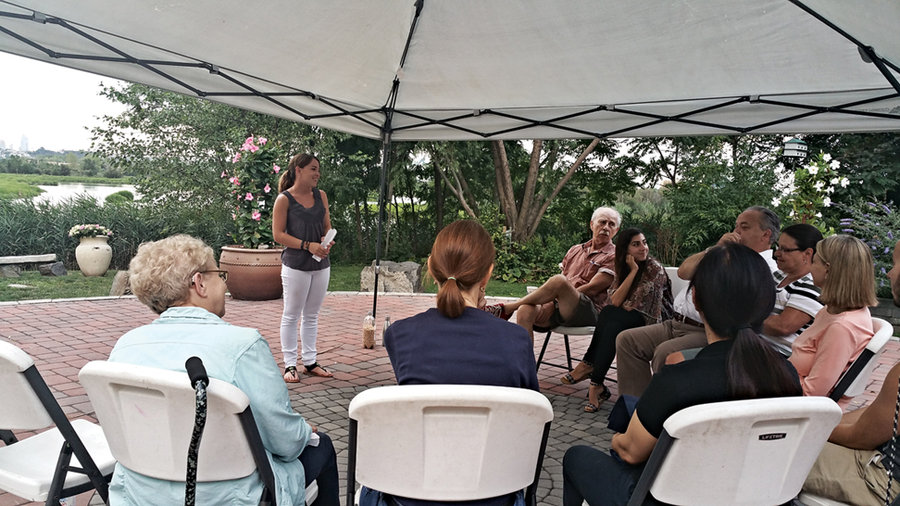“I lived my whole life in Secaucus. It’s a perfect mix of urban and suburban areas,” said Courtney Lichtenberger, the environmental intern of the Secaucus Environmental Department, on Wednesday as part of an ongoing three-week series of speakers who will give public talks about the local environment. Lichtenberger discussed Meadowlands wildlife and preservation on June 13 at the meditation garden at the Recreation Center.
“I saw egrets coming back, ducks coming back, and the water was getting better.” — Chelline Lichtenberger
____________
From glaciers to factories
She started off with history from almost 30,000 years ago. “The Meadowlands were carved out by glaciers,” Lichtenberger said.
According to Lichtenberger, 100 years ago, the river was lined with factories dumping their chemicals and other wastes into it. Thanks to state preservation laws and a strict no-dumping policy, the environment has gotten better, and animal habitats increased. “It’ll never be the way it once was,” Lichtenberger said.
The group said that the Clean Water Act passed in 1972 was part of the reason the environment is improving. The Clean Water Act included a no-dumping policy for factories.
Courtney’s mother, Chelline, who lives in Secaucus, said she noticed the changes after the act. “As a child, for years I didn’t see birds in the Meadowlands, and then they started coming. I saw egrets coming back, ducks coming back, and the water was getting better.”
“Birds are coming back, and egrets are catching fish. If the fish were dying in this water then egrets wouldn’t come here to eat,” Lichtenberger said.
The water is brackish or salty water which makes it a difficult habitat for certain plants and fish, according to Lichtenberger. Brackish water is a mixture of river and seawater with a high salt content. She went over the species that can live in brackish water, and why they’re important to the ecosystem.
Phragmites are the common reed found growing next to the marsh or the Turnpike in the meadowlands. Lichtenberger said the reed is not native to the state, but its strong ability to live in salty land and water has caused it to take over the Meadowlands. She said residents tried to replace spartina, another plant found in marshes, with phragmites, because the spartina made the milk from their cows taste bad.
Clean-up coordinator Lynn Kramer for the Environmental Department said, “Spartina grass is coming back strong too, and that’s a sign of better quality of water.”
“We don’t know if it’s good or bad that phragmites have taken over, but it takes too many pesticides to kill them, and important migrating birds, ducks, and songbirds live in or visit the phragmites,” Lichtenberger said. “I don’t think the phragmites are leaving soon.”
“Songbirds stop by for only two days, and I saw a yellow bird fly by here today which could possibly be the goldfinch, the state bird,” Lichtenberger said.
Don’t chop down trees
Trees are also an important part of the Meadowlands, according to Lichtenberger. “Their roots hold into the soil, and when we get rid of them the ground isn’t as strong as it once was,” she said.
“It’s good to tell people not to harm the environment by cutting down trees. If you cut down a tree, then you’ll see a rise in mosquitoes.” Lichtenberger said.
Most birds in the meadowlands, like tree swallows, eat insects like mosquitoes, and fly low to the ground to hunt other insects. Removing trees means fewer birds.
Crabs are one creature that may not be adjusting well to the polluted soil, according to Lichtenberger. “There are signs all over that say ‘don’t eat the crabs,’ because they are poisonous,” Lichtenberger said. Since the water has been polluted for years, the pollutants haven’t all left the soil. “Crabs have gotten weaker because of the pollutants. They started eating plants in the soil,” Lichtenberg said. She said their diet is changing, because the fish aren’t healthy enough for the crabs to eat, either.
“I love this place. I like to think that by doing this I can help nature in some way. The changes we’re doing now are for the future,” Lichtenberger said.
